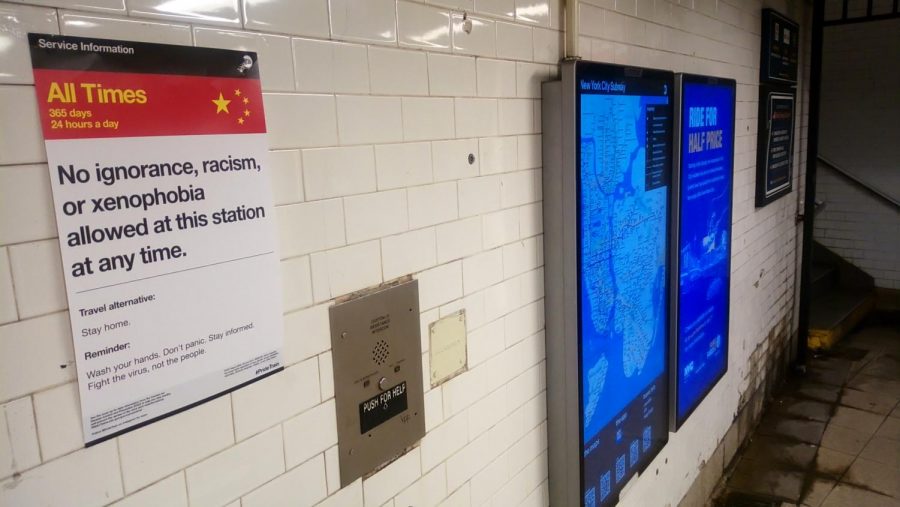Xenophobia on the rise as COVID-19 spreads
Amid panic about the COVID-19 pandemic, another virus has spread quickly through the United States: xenophobia against Asian Americans.
A website called “Stop AAPI (Asian Americans and Pacific Islanders) Hate”, was created by the Asian Pacific Policy and Planning Council (A3PCON), Chinese for Affirmative Action (CAA) and San Francisco State University’s Asian American Studies Department. The website allows Asian Americans to anonymously report discrimination that they have been faced with.
In the first two weeks of the website’s launch on March 19, they received 1,135 reports. These incidents have not only involved Chinese Americans, but also Japanese, Korean, Taiwansese, Vietnamese and Filipino Americans, which clearly indicates racial profiling against Asian Americans according to Russel Jeung, Ph.D., the chair of Asian American Studies at San Francisco State University.
“The flood of incidents related to anti-Asian hate–over 1,100 and counting–reflect the hostile environment that Asian Americans and Pacific Islanders face during this pandemic. The data helps us respond to specific community needs and make targeted policy recommendations. These include providing mental health resources to bullied youth and ensuring that stores provide safe access for AAPIs to their goods and services,” Jeung said.
Cynthia Choi, the co-director of Chinese for Affirmative Action, recognized that while the system of online reporting is based on the honor system, and so is not guarded against online troll or false reports, they “are definitely seeing patterns.”
According to the Washington Post, Darren Linvill, a researcher and assistant professor of communication at Clemson University, showed in an unpublished analysis that Twitter hashtags with an anti-Asia bias have seen a sudden rise in popularity, such as #ChineseVirus, which was used almost 130,000 times the day after Trump used it in a tweet.
The Network Contagion Research Institute released a report called “Weaponized Information Outbreak: A Case Study on COVID-19, Bioweapon Myths, and the Asian Conspiracy Meme” that examines the surge of hate speech against Asian Americans online.
The study first looks at 4chan, a message board based website that is known for its racist, misogynistic, and inappropriate posts. According to the study, there was a rise in the use of slurs against Chinese people in association with the word “virus.”
The study then investigates the appearance of memes depicting a conspiracy theory that suggests that COVID-19 is a weaponized bioweapon created by China, which the study calls “Asian conspiracy memes” on Twitter and Reddit, stating that “as Sinophobic, weaponized information leaves more extremist sites and traffics into mainstream communities, the risk of Asian conspiracy memes mainstreaming on a national scale becomes aconcerning and increasingly likely outcome.”
While there have been several studies showing a rise in xenophobia online, there are plenty of real-life examples as well. These include the plummeting of business at Chinese restaurants, Asian Americans being barred from entering certain businesses and establishments and being physically and verbally abused.
Advocates have urged against using terms like “Wuhan Virus” and “Chinese virus” that use the geographical origin of COVID-19 when talking about the virus. “That’s morally reprehensible, and it doesn’t help us solve the problem,” Manjusha Kulkarni, Executive Director of the Asian Pacific Policy and Planning Council, said, “None of us would feel good about being labeled a virus. It’s disruptive. It’s physically and emotionally harmful.”
The Director General of the World Health Organization, Tedros Adhanom Ghebreyesus, has reminded everyone that “stigma, to be honest, is more dangerous than the virus itself.”
Your donation will support the student journalists of Walnut Hills High School. Your contribution will allow us to purchase equipment, cover our annual website hosting, printing costs and offset competition and conferences fees for students.








